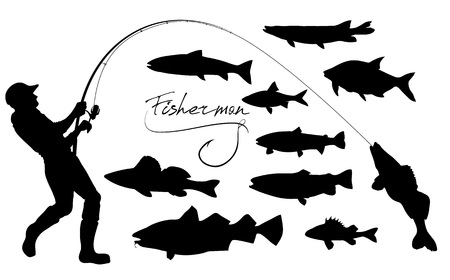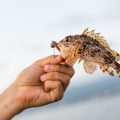1. Understanding Mackerel Behaviour in British Waters
If you’re looking to seriously up your mackerel game around the UK, understanding the subtle cues of these silver bullets is essential. Mackerel are far from random wanderers; their movements along the British coastline are finely tuned to seasonal shifts, water temperature, and the availability of prey. Spring sees the first shoals arriving from deeper Atlantic waters, typically making landfall along the south-western coasts before fanning out towards the North Sea as summer progresses. These migrations aren’t just a matter of tradition; they are driven by a hunger for sand eels, sprats, and juvenile herring—the very backbone of their diet in British seas.
The best anglers keep one eye on local reports and another on natural signs: gulls wheeling frantically above boiling surface water, or that tell-tale shimmer as mackerel herd baitfish towards piers and rocky promontories. Prime hotspots include well-known marks like Chesil Beach, Brighton Marina, and the breakwaters around Scarborough and Whitby—each offering its own micro-habitats where mackerel congregate at dawn or dusk. Recognising these patterns—tuned into tides, wind direction, and even subtle temperature changes—allows you to predict mackerel locations with much more precision than simply casting at random.
In essence, mastering advanced spinning tactics begins with a naturalist’s curiosity: observe closely, note seasonal patterns, and pay attention to those fleeting hints nature offers. The more intimately you understand mackerel behaviour in our local waters, the better equipped you’ll be when it comes time to select lures, adjust retrieves, and ultimately fill your bag with Britain’s most sporting sea fish.
2. Selecting the Right Spinning Tackle for the British Coast
When it comes to mackerel spinning in British waters, choosing the right tackle can mean the difference between a bustling session and going home empty-handed. The UK coastline is wonderfully diverse—ranging from bustling piers in Brighton to rugged Cornish headlands and sweeping Northumbrian sands. Each venue demands slightly different gear, and British anglers have become masters of tailoring their setups for both performance and durability.
Modern Spinning Rods: Finding the Sweet Spot
For most coastal marks, rods in the 8ft–10ft range hit the sweet spot for casting distance and lure control. Contemporary brands like Sonik, Shakespeare Agility, and Daiwa Legalis are firm favourites among UK anglers thanks to their responsive blanks and saltwater-resistant fittings. If you’re targeting piers or rock marks, opt for a rod with a fast action and a casting weight of 20–60g—perfect for sending feathers or metal lures into deeper water. On open beaches, slightly longer rods give you extra reach over breaking surf.
Reels: Balancing Power and Precision
The choice of spinning reel is just as crucial. Popular options include the Shimano Nasci, Penn Battle III, and Okuma Ceymar. These reels offer a smooth drag system, corrosion resistance, and reliable gearing—essentials when mackerel shoals turn up in force and you’re working your kit hard. For most UK marks, a 3000–4000 size reel strikes an ideal balance between line capacity and manageable weight.
Line Setups: Braid vs Mono for UK Conditions
Braided mainlines (typically 15–20lb) are increasingly popular among British spinners due to their sensitivity and casting distance—ideal for detecting those rapid-fire mackerel bites. However, on rocky venues where abrasion is a concern, some still favour robust monofilament (12–15lb). Pair your mainline with a short fluorocarbon leader (15–20lb) to provide stealth and extra protection against sharp rocks or pier structures.
Tackle Comparison Table for Typical British Marks
| Venue Type | Rod Recommendation | Reel Size/Model | Mainline Type | Notable Brands |
|---|---|---|---|---|
| Pier | 8’–9’, Fast Action (20–60g) | 3000–4000 (Penn Battle III) | Braid (15–20lb) | Sonik, Shimano, Penn |
| Rocky Mark | 9’–10’, Medium-Fast (30–70g) | 3500 (Daiwa Legalis) | Braid or Mono (15lb+) | Daiwa, Okuma, Greys |
| Sandy Beach | 9’6”–10’, Medium Action (20–50g) | 3000 (Shimano Nasci) | Braid (15lb) + Fluoro Leader | Shakespeare, Daiwa, Shimano |
This attention to detail in gear selection ensures that whether you’re flicking lures at dawn from a shingle spit or working feathers beneath the shadow of Brighton Pier, your tackle stands up to Britain’s ever-changing coastal conditions—giving you the confidence to make every cast count.

3. Choosing Lures: Local Favourites and Proven Patterns
When it comes to spinning for mackerel in British waters, the right lure choice can make all the difference between a slow afternoon and a frenetic session. Local anglers have refined their preferences over generations, favouring lures that match the temperament of UK seas and the feeding patterns of our mackerel shoals.
Feathers: A Time-Honoured Classic
Feathers remain a staple in every British sea angler’s tackle box. Typically fished on a string of three to six, these lures imitate small baitfish and are incredibly effective during peak summer runs. Opt for luminous or white feathers under low light or cloudy conditions, while iridescent blues and greens excel in bright sunshine. Size-wise, smaller feathers (size 2-4) tend to outfish larger ones when mackerel are feeding on sandeel fry or sprats close inshore.
Metals: Flash and Vibration for Hungry Shoals
Metal lures such as spinners, spoons, and wedges are go-to choices for covering ground and attracting fish from distance. British favourites include classic silver Toby spoons and streamlined Dexter wedges. Match the weight to sea state—a 20g lure casts well in calm water, but step up to 40g if you’re facing a stiff westerly. Silver is universally effective, but chartreuse or pink patterns stand out when visibility drops after rain or during early morning sessions.
Soft Plastics: Subtlety Meets Versatility
Soft plastics have surged in popularity around UK piers and headlands, offering a finesse approach when mackerel are finicky. Slim paddle-tails in natural shades—like pearl, olive, or even translucent blue—work wonders in clear water. In murky conditions, don’t be afraid to try brighter hues with a touch of glitter for added attraction. Rig them on lightweight jig heads (5-10g) to allow a lively, darting action just below the surface or through midwater columns where mackerel often lurk.
Presentation Tips for Changing Conditions
Adapting your presentation can elevate your catch rate significantly. On flat-calm days, retrieve your lure with short, sharp twitches to mimic injured baitfish; when there’s chop on the water, a steady wind-in helps your lure cut through turbulence and maintain its profile. Always keep an eye on bird activity—if terns or gulls are working close to shore, switch to smaller lures and cast into the fray for explosive takes.
A Nod to Local Knowledge
Remember, every British mark has its quirks—chat with local anglers at your favourite pier or beach for insider tips on what’s working that week. By tuning into local lure trends and tweaking your approach according to water clarity and weather, you’ll soon find yourself at the heart of the action when the mackerel shoals arrive.
4. Retrieval Techniques to Tempt Shoaling Mackerel
When it comes to spinning for mackerel in British waters, fine-tuning your retrieval method is often the difference between a slow session and a bulging stringer. Mackerel are notorious for their voracious and competitive feeding behaviour, so adopting advanced spinning retrieves that mimic distressed baitfish can significantly boost your catch rate.
Sink-and-Draw Method
This technique is an old favourite on UK piers and breakwaters. After casting out, allow your lure to sink through the water column—counting down helps you pinpoint the depth where mackerel are shoaling. Then, sharply lift the rod tip (the “draw”) and retrieve slack line as the lure sinks again. This stop-start motion closely resembles a wounded baitfish, triggering aggressive strikes from following mackerel.
High-Speed Wind
Mackerel are lightning-fast predators, especially when hunting in packs. The high-speed wind involves cranking your reel handle as quickly as possible after your lure hits the water. This frantic retrieve is best paired with slim-profiled metal lures or spinners, which flash and dart enticingly through the shoal. If fish are chasing but not connecting, try varying your speed mid-retrieve for added attraction.
Erratic Jerking Retrieve
For anglers seeking an edge during pressured bites, erratic jerking can be deadly. Use short, sharp twitches of the rod tip interspersed with brief pauses. This unpredictable action mimics a disoriented sprat or sandeel, drawing savage takes from even wary mackerel in clear Cornish coves or along North Sea piers.
Comparing Advanced Retrieval Techniques
| Retrieve Style | Best Conditions | Lure Types | Key Advantages |
|---|---|---|---|
| Sink-and-Draw | Variable depths; Suspended shoals | Metal jigs, soft plastics | Imitates injured prey; triggers strikes on fall |
| High-Speed Wind | Active shoals near surface; Clear water | Slim metals, spinners | Covers water quickly; excites competitive bites |
| Erratic Jerking | Tough bites; Pressured venues | Spoons, weighted shads | Mimics panicked baitfish; entices wary fish |
Local Insight: Reading British Waters
The key to mastering these retrieves lies in reading the day’s conditions—turbid Bristol Channel tides may call for more pronounced movements, while glassy calm evenings off Brighton favour subtlety. Don’t be afraid to experiment: British mackerel respond dynamically to variations in retrieve style and pace. By tailoring your approach and observing how local shoals react, you’ll soon find yourself out-fishing the crowd on pier ends and shingle beaches alike.
5. Timing and Tides: When to Spin for Best Results
Any seasoned mackerel spinner knows that in British waters, timing isn’t just a detail—it’s everything. The interplay of tides, light, and weather can turn an average session into an unforgettable haul. To truly elevate your catch rate, it pays to become fluent in reading local tide tables and weather forecasts, treating them as essential kit alongside your rods and lures.
Mastering the Tides
British mackerel are notorious for following the baitfish, which are themselves governed by the pull of the tide. Generally, spinning is most productive during the last two hours of the flood tide and the first hour of the ebb. This is when shoals move inshore to hunt, especially around rocky outcrops and piers. Local tide tables—readily available at tackle shops or online—will help you plan sessions down to the minute, ensuring you arrive before the action peaks rather than after it’s fizzled out.
The Dawn Raid
Few sights compare to a British coastline at first light, rod in hand and hopes high. Early mornings are prime time: mackerel hunt close to shore as sunlight begins to filter through the water. The low angle of the sun also gives your lures maximum flash appeal, drawing predatory attention from a distance. Check both tide times and sunrise forecasts; aim for those magical overlaps where high water coincides with dawn for a session that’s often brimming with energy—and fish.
Sundowners: Late Summer Evenings
Don’t pack up when the crowds do. On balmy summer evenings, as beachgoers drift away and light begins to fade, mackerel frequently surge back inshore for a final feed. Watch for calm weather windows and use detailed forecasts—wind direction plays a crucial role, with gentle onshore breezes often delivering baitfish right into your spinning range. A falling tide at dusk can be particularly electric, so check your local tables and time your outing accordingly.
Reading Nature’s Signals
Keen observation is a skill honed by every accomplished angler. Keep an eye on seabird activity; diving gulls or terns are reliable indicators that baitfish—and thus mackerel—are present. Cloud cover also influences success: overcast days can extend feeding spells well past sunrise or sunset, offering more forgiving conditions for anglers who prefer not to rise at dawn.
The Well-Equipped Spinner’s Edge
Pairing technical know-how with natural observation gives you an edge over casual anglers. By using local knowledge, digital tide apps, and even traditional barometers, you can anticipate those brief windows when British mackerel are most accessible—and most aggressive. In short: fish smarter, not harder, and let timing work in your favour on every spinning session.
6. Staying Safe and Respectful on Busy British Marks
Britain’s coastline is a magnet for keen mackerel anglers, especially during the peak summer runs. Whether you’re casting from a bustling pier in Brighton or scrambling over the rugged rocks of Cornwall, blending advanced spinning tactics with considerate behaviour is essential. Here’s how to keep your session safe, courteous, and conservation-minded—hallmarks of experienced British anglers.
Mind Your Manners: Sharing Space on Crowded Spots
Piers and popular marks often draw crowds when the mackerel are in. Respect fellow anglers by maintaining a comfortable distance between lines—about two rod lengths is standard etiquette. Avoid casting over others’ lines (“crossing swords”), and always give way to those landing fish, as it helps everyone avoid tangles and frayed tempers. A friendly nod or quick chat goes a long way; camaraderie on the jetty is part of the British angling tradition.
Safety First: Navigating Slippery Rocks and Piers
British shores can be treacherous underfoot. Wear sturdy footwear with good grip—cleated boots or trainers designed for wet surfaces are ideal. Always check tide times before setting out, as some ledges disappear fast beneath the incoming sea. Watch for green weed and algae, which can be slipperier than they look. Keep your kit tidy to prevent trip hazards, and never fish alone from remote rock marks if you can help it; safety in numbers is wise.
Conservation in Action: Fish Responsibly
With mackerel stocks under increasing pressure, responsible fishing has never been more important. Stick to local bag limits (often 20-30 fish per angler per day) and only take what you’ll use fresh—freezing excess catches “just because” isn’t considered good form in UK angling circles. Handle all fish gently; use barbless hooks where possible and return undersized or unwanted fish promptly. Carry a rubbish bag and leave your mark cleaner than you found it—a simple act that earns respect from locals and fellow anglers alike.
Observe Local Byelaws & Respect Wildlife
Many British marks have specific rules—check signage for seasonal closures or bait bans, particularly around marine conservation zones or piers with mixed-use restrictions. Avoid disturbing nesting seabirds or seals hauled out nearby; their welfare takes precedence. If unsure about local regulations, pop into a tackle shop or chat with regulars—they’re usually happy to share advice on best practice.
The Hallmark of a True Angler
Advanced spinning is as much about attitude as technique: blending skill with stewardship. By prioritising safety, courtesy, and conservation, you’ll not only boost your catch rate but also safeguard Britain’s beloved coastal fisheries for future generations of mackerel chasers.


